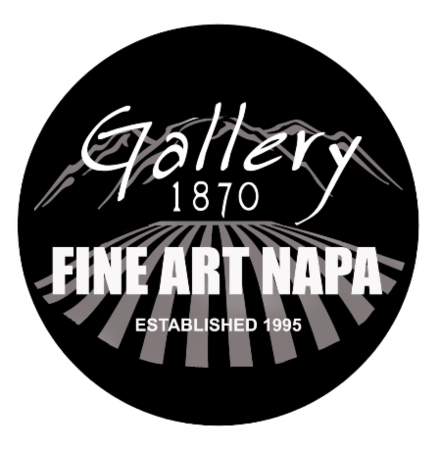Foxy Lady bronze sculpture
Foxy Lady bronze sculpture by historical and wildlife sculptor David Manuel. Only one available!
*Please note we are a fine art Gallery in the Napa Valley and we are not in contact or connected to the artist David Manuel or his Foundry. The pieces we own are the only remaining pieces from our collection that we are offering at prices well below the artists retail price.

Artist Biography
Manuel, now in his eighties is still designing and producing new works, is a well-known sculptor who has created a number of public works, including a series of statues of John Wayne. He has been named both the official sculptor of the Oregon Trail and the official sculptor of the United States Marshals bicentennial.
David Manuel, born in 1940 of Italian descent and raised in Walla Walla, Washington, began his career in art at a very early age. David's aunt sold his sketches to pilots at a nearby bomber training base. The sketches, selling for a dime each, proved David's talents at age 3 1/2 years. Later, a first grade teacher recognized David's talent, encouraging his mother to be supportive. At age nine, David received his first national award, which was judged by Norman Rockwell.
David continued his art abilities throughout his school years and as a young adult. This included having one-man shows inside a Safeway store where he was employed. His first painting sold for $45.00.
David Manuel's career has grown rapidly, with his paintings valued as high as $20,000 and into the three dimensional art world. Much of David's success is attributed to having his own museum, where he is able to spend hours in research. The "Nez Perce Crossing" Museum is where the authenticity for which he is so respected originates.
The world of bronzes have been very good to David. In the 1980s he had the honor of many commissions, among these are three monuments of JOHN WAYNE. This gained him the title of "Authorized Sculptor" for Wayne Enterprises. Later in the '80s, David was chosen the Official Sculptor for the "UNITED STATES MARSHALS BICENTENNIAL." This monument previously on display in the founder's wing at the Cowboy Hall of Fame, is now placed at the Department of Justice in Washington D.C. A smaller replica of this bronze has found its home at the White House in Washington D.C.
n 1992, David and his wife Lee were honored with a request from the office of the Oregon Trail Coordinating Council, Oregon Trail Celebration '93. Among many honors this included a monument designed by the artist. This assignment also held the title of "The Official Sculptor for the Oregon Trail." The political uprising from this statue gained national recognition and respect for the artist who was proud to portray historical accuracy in place of political correctness; David's faith proved to be beneficial and met approval by many. In the year 2002, David sculpted what may be recognized as the most complete depiction of Lewis and Clark.
In 2005 "The Bronze Valley" in Northeastern Oregon expanded into La Grande. Hot Lake Springs, rich in the Native American and Pioneer history. Could it be that the final home of Manuel History and Bronze has been found?
One will need to be alert to say the least, to keep up with "what's happening" with this, accomplished, and still accomplishing artist.
The Lost Wax Process
- The artist's completed sculpture is taken to the foundry where it is photographed and measured.
- The clay is then cut into pieces, depending on how the resulting molds will best pick up the detail and receive the wax and metal poured into it. These molds—made of silicone rubber—are covered with a thick, plaster outer mold.
- Several coats of wax are poured into a mold. After the wax has cooled, it is removed from the mold.
- Wax chasers clean, smooth, and remove any imperfections left by the mold. Any imperfections passed over—even a small scratch or bubble—won't be caught until the sculpture is in bronze. David inspects each wax before it moves to the next step.
- The wax is then "sprued." The wax sculpture is attached to a wax cup with sprue wax channels. These channels allow the metal to reach all the details of the sculpture.
- Eight coats of slurry are applied with 24 hours drying time between each coat, resulting in a thick ceramic shell around the wax.
- These shells are put in a burn out oven and heated to 1500 degrees to melt out the wax, leaving an empty cavity for the bronze.
- The hot shells go into the pouring room and are heated to 2200 degrees. The bronze casting workers fill each shell with molten bronze.
- Sledge and jack hammers are used to carefully chip the shell off the bronze. The sculpture is sandblasted to remove smaller debris.
- Metal toolers begin welding the pieces back together, aligning, buffing, grinding, and repairing the detail and texture until the sculpture looks as if it were cast in one piece.
- The final step is patina. Color is put on the bronze with heat and chemicals. Hot waxed seals the patina and ceases any chemical reactions. After receiving a base, the bronze is ready to be displayed.



















